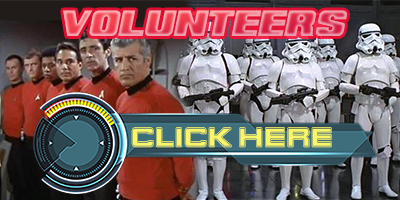Past Guests of ValleyCon 37
ValleyCon strives to bring the best and most relevant guests featured in sci-fi, fantasy, horror, comics, gaming and film & TV! These guests include Media Icons, Artists, Authors, Psychics and many more. Autographs are available at one of the industry's LOWEST price point ever. The guest will do panels, readings and demonstrations for your education and entertainment.
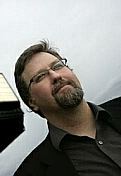
Christopher Mihm
Media Guest
Filmmaker who created The Monster of Phantom Lake, It Came From Another World, Cave Women on Mars, Terror from Beneath the Earth, Destination: Outer Space, and Attack of the Moon Zombies.

Clare Kramer
Media Guest
Clare Kramer is an American actress best known for her portrayal of Glory, the main villain in Season 5 of Buffy the Vampire Slayer and star of the movie The Thirst.

David Weber
Author Guest
Author of Oath of Swords, The War God's Own, Path of the Fury, The Armageddon Inheritance and creator of the popular character Honor Harrington
Author's Note [and excuse]: I don't really do "biography" very well. So what I'm going to do here is to give you most of what I think of as the sort of biographical information people seem to be looking for, and also something a bit more rambling. What I'm really after is to provide a little feel of how and why I do what I do, and not just what I do.
My family moved to Greenville, South Carolina, when I was about two years old. Before I started grammar school, my parents moved to just outside Simpsonville, South Carolina, where one of my first memories is "helping" my father clear the site of the house they later built. (Looking back, it's remarkable to me how patient he was.) I attended Simpsonville Elementary School, Hillcrest Junior High School, and Hillcrest High School, graduating in 1970. My first two years of college were with the then brand-new Clemson extension program at Greenville Tech. I completed my undergraduate studies (not without a few adventures) at Warren Wilson College, and attended graduate school (history) at Appalachian State University, Boone, North Carolina.
I had always intended to get my masters and then my doctorate in history, and teach at the college level, hopefully writing on the side. About the time I was finishing up my masters thesis, however, I came across a study which said that over half of all tenured history teaching positions at the college level were then held by instructors under the age of 42. This explained to me how it was that some of the very good instructors I'd had at Appalachian State had been unable to obtain tenure at the larger and more prestigious universities which their abilities clearly merited. That, in turn, suggested that a certain degree of rethinking might be in order, and I returned to Greenville, South Carolina, where I took over Weber Associates, Incorporated, from my mother, who was retiring to Georgia to care for my grandmother. That was in the early eighties (I took a total of three years out in the course of my undergraduate and graduate school), and I ran Weber Associates for the next several years.
I've supported myself one way or another as a writer or in something associated with writing since I was 17 years old, with the exception of one year I spent working as a hotel desk clerk, during my first year of college, and working in a heat transfer printing textile plant while my first wife completed her senior year of college at Warren Wilson before we moved up to Boone. I started writing poetry and short fiction in the fifth grade. When I was 16 I won the first place awards for poetry, SA, and short story in the Greenville Arts Festival's 16-22 age bracket.
My parents always encouraged all of the kids to read. Oddly enough, however, my mother (who had a masters degree in American literature and was an excellent writer) didn't really read for pleasure, whereas my father (with a masters degree in business), who came from a blue-collar Chicago family, most certainly did. In some ways, this gave me the best of both worlds. My mother encouraged me and helped me to develop my writing skills, while my father taught me to love to read and initially exposed me to science fiction.
I was only about 15, when my mother first began letting me write advertising copy. After stints as a public high school teacher and as a remedial English teacher at one of the local universities (Furman), Mom had gone to work for Henderson Advertising Agency, in Greenville. While she was there, although I didn't realize it at the time, she hit the proverbial "glass ceiling," in that promotions to things like heading the copywriting department were going to male colleagues who were junior to her and, frankly, weren't as good at writing copy as she was. This had something to do with her leaving Henderson to go to work for Leslie Advertising, also in Greenville, and, eventually, to launching Weber Associates. I actually started writing copy for her while she was still at Leslie, and once she had launched Weber Associates, I became in effect a junior, apprentice copywriter. After graduating from high school, I worked for the firm full time for two years before my first wife and I headed to Warren Wilson College. At Warren Wilson, I worked for two years in a local print shop in Asheville, North Carolina, using the typesetting and copywriting skills I had developed at Weber Associates. At that time, I was also doing paste-up art and most of the other chores associated with producing printed material in a pre-computer age. In fact, I am probably one of the world's last trained Linotype operators. (And isn't that a useful skill?)
After returning to Greenville from Boone, I took over Weber Associates, which I ran basically as a one-man shop for the next several years. In terms of advertising, I've done radio copy, television copy, national print magazine copy, and newspaper copy. I've managed at least two national PR campaigns, and I've also written articles for both newspaper and magazine publication, written government reports, annual reports for local businesses, financial plans and urban development plans (in concert with Philips Hungerford), and worked in several political campaigns. All of these are (or should be) excellent training for any professional writer. None of them are the sort of writing which will tolerate the concept of "writer's block," and all of them are deadline intensive. In addition, you have to learn to take editorial input. In fact, you have to learn how to take bad editorial input and live with it if you're developing an advertising campaign for somebody who doesn't realize that he's insisting on something which is a Bad Idea. In my opinion, there are very few training programs for developing a writer's skill set which could possibly be superior to spending a few years doing the very best job you can producing advertising copy. It doesn't sound dramatic, and it doesn't sound like the stuff of high artistic endeavor, but the training is invaluable.
I've also done wargame design, mainly in the development of the StarFire gaming series from Task Force Games of Amarillo, Texas. StarFire was a tabletop boardgame which, in its original karma was basically a very fast playing set of rules for purely tactical warfare. I became interested in the game both as a player, and then, in the late seventies, as the person who developed the campaign and strategic rules which allowed players to build entire empires and expand them.
The reason my work with StarFire was significant in terms of my writing career was twofold. First, it was still more experience in how to write, and the development of the "future history" which tied the various scenarios of the games together and produced the "historical background" of the stellar empires in conflict with one another helped my developing appreciation of how to go about building a literary universe that was coherent and consistent. Second, it led directly to the writing of my first published novel, Insurrection, in collaboration with Steve White.
Steve and I had become acquainted by mail and by phone because of his interest in the StarFire game. I started bouncing rules concepts off of him, and when I set out to design a game which was to be called The Fourth Interstellar War, I did what I usually did, which was to write myself a short story about one of the critical incidents which led to that war. Writing a short story helped me to set the tone, or the feel, that I was going to be reaching for in the product I was designing. In this instance, I sent the story to Steve, and he responded with a short story of his own, set in the same chunk of future history. That sparked another story from me, which sparked another story from him, which sparked another story from me . . . and after a few weeks we realized that what we were actually doing was writing the chapters of a novel. Which is how Insurrection came to be written.
We completed the rough draft of Insurrection in late 1986, and in 1987, I submitted it to Avon Books. At that time, John Douglas was Avon's senior editor. It took several months for him to actually read the manuscript, for several reasons, but after he did, he liked it very much. The main problem was length; even after I'd cut the length of our original manuscript by 100,000 words, what we had left in the "leaner, meaner version" was still 185,000 words, which was just a tad long for a first novel from a pair of writers no one had ever heard of.
We worked with John for over a year trying to reduce the length still further or to find some way to publish it as two books. Unfortunately, Insurrection didn't have a logical dividing point, and in my own initial editing attempts, I'd already taken out most of the real fat. We managed to squeeze out just over another 50,000 words, but then we were pretty much stuck. Eventually, John told us that he'd had all of his fellow editors read the book, and they were in agreement that we couldn't cut still more without beginning to seriously damage the story line. Unfortunately, his corporate superiors at that time still wouldn't let him buy a book that was 132,000 words long from two authors with no track record. He was unhappy that we had spent that long working with him and he still wasn't able to buy a book he liked very much. (It should be remembered that all of this was going on in what was effectively pre-e-mail days. I'd written the book on an Osborne portable computer with a -- literally -- 3" x 5" display and dual single side, single density 92 K floppy drives, which left me with a stack of better than 60 discs, even having flipped them and used both sides, and there was no e-mail connection. All correspondence was by snail-mail, which greatly stretched the process in comparison to how long it would have taken today.)
John's advice was that we withdraw the book, submit it somewhere else (choosing a publisher who printed good military science fiction), and tell whoever we submitted it to that the only reason he hadn't bought it was the length problem. He practically insisted that I have the second publishing house call him so he could personally assure them that he truly would have bought the book if the front office had only let him and that he recommended it highly.
That's about the nicest "rejection letter" anyone is ever likely to get, and I remain immensely grateful to John. Not only did he give Steve and me an invaluable leg up when we submitted the manuscript to Baen Books, but he also gave me a further demonstration of professionalism.
At any rate, Baen bought the book in 1989, literally within a week of receiving the manuscript. It was published in 1990, by which time Baen had also bought the solo novels The Apocalypse Troll, Mutineers' Moon, and The Armageddon Inheritance from me. Baen forgot that it had The Apocalypse Troll for several years, and it wasn't published until . . . 2002, I think.
In late 1991, Jim Baen pointed out that I seemed most comfortable writing novels which were really parts of series. He'd already bought the second collaborative StarFire novel, Crusade, from Steve and me, but he asked me to pitch several specific solo concepts for series to him. His theory was that instead of "stumbling into" a series, we should plan one from the beginning, so that I could get myself properly organized going in.
I came up with a total of 10 possible proposals. One of them became the Honor Harrington series. Another of them eventually became the Hell's Gate series, and yet another eventually became the Safehold series I'm currently publishing with Tor Books (the third Safehold book, By Heresies Distressed, is due out in July 2009). I was unaware when I proposed what became the "Honorverse" that Jim had been looking for someone to write "Horatio Hornblower in space" for about 25 years. I'd already chosen Honor's name before I discovered that, however. I'd known from the beginning what I wanted her first name to be, and I also knew that if the series worked the way I hoped it would, one of the natural comparisons for it would be Horatio Hornblower, so I chose her surname to match Horatio's initials and as a sort of homage to CS Forester. But I wasn't prepared for was the enthusiasm with which Jim embraced the concept. He immediately banged off a contract for no less than four novels, and I wound up writing the first two books in the series -- On Basilisk Station and The Honor of the Queen -- back to back. In fact, I delivered the second book less than two months after the first one, and they were actually released only about one month apart. That was very unusual timing, and I'm of the opinion that it was a very smart marketing decision on Jim's part and that it made a material contribution to the way the Honorverse took off.
If I wasn't prepared for Jim's enthusiasm, I was even less prepared for where this series has gone since the first two books. We've just published the thirteenth Honorverse novel (Storm from the Shadows, March, 2009), I've delivered the fifteenth (Mission of Honor, scheduled for July, 2010), and Eric Flint and I are currently working on the fourteenth (Torch of Freedom, scheduled for November 2009). In addition, there are four anthologies of Honorverse short fiction already in print (and we're just finishing up the fifth one), and the series is still going strong. All of the novels since number eight, War of Honor, have all made it at least to the New York Times extended list of bestsellers.
A writer is not often fortunate enough to enjoy that degree of success. That's a point of which I'm well aware, and I'm very grateful for the reader support I've received. I'm especially gratified, since I write basically military science fiction, by the heavy rotation of current and past military personnel in my readership. It suggests I'm getting something right.
Of course, the Honorverse isn't the only thing I write. In fact, counting the collaborative novels and the Honorverse anthologies, but not counting omnibus edition re issues or anthologies I've contributed to but didn't edit, at this point I have 47 titles which have been published or delivered but not yet released. I look back at it, I guess that isn't too bad a record for 20 years at my trade.
Writers get asked all kinds of questions. Why did you start writing? What's the first novel you remember reading? Why did you choose the genre you chose? How did you sell your first novel? Are you agented? How does someone learn to write? Why do you think your books work . . . or don't, as the case may be?
The list goes on and on, and I suspect quite often that the truth is that the person you're asking doesn't really know some of the answers himself. More than that, I think that sometimes a writer can overthink his response to that sort of question, just as trying too hard to analyze what's worked and what hasn't worked can lead him down blind alleys, or cause him to lose some of the spontaneity that's helped him succeed up to that point. I know I don't know definitive answers to all of the questions people have asked me about my own writing, but I also do know this -- I think of myself as a writer only secondarily, because I think of myself primarily as a storyteller. I'm a writer, not an "author," and the fact that I write is simply a reflection of the medium through which I communicate the stories I tell to my audience. I think of myself as a craftsman working at his craft, not as an artist working at his art. I have nothing against art, mind you, and I would love to see art worked into my craft wherever possible, but it's not really my primary focus. There are a handful of writers who I think are obviously artists of the highest caliber, stylists who do exquisite and beautiful work as well as telling extraordinarily good stories. There are, unfortunately, a much larger number of writers, in my opinion, for whom their emphasis on their "art" is more important than their emphasis on the story they're telling. My own feeling is that when a writer's style begins to distract from the story, he's not doing his best work. And that when a writer begins to put the "art" of his work ahead of his readers' enjoyment of it, he's not really going to produce his best work, no matter how "artistic" it may be. I'm not about to allow reader reaction to dictate where I go with a specific story or a specific series, but it's important to me to know what my readers think -- what works for them, why they read the books, why they recommend them to other people, what they wish I'd do differently. Keeping yourself informed of your readers' reactions is as important as remaining willing to listen to your editor's criticisms and suggestions. Ultimately, you have to be the final judge of what's going to be published over your name, but the day you decide your judgment is infallible -- that no one else has a critique or a suggestion which could improve your work -- you are no longer going to be doing the best work of which you are capable.
And now, since I find myself about to wander off into an exposition of the writer's craft and my own perspective on it, I think this is probably a pretty fair place to stop.
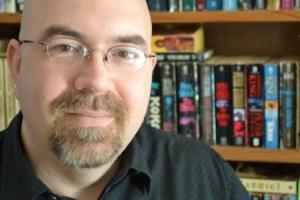
Jamieson Ridenhour
Author Guest
Author of Barking Mad: A Reginald Spiffington Mystery and creator of the short film Cornerboys.
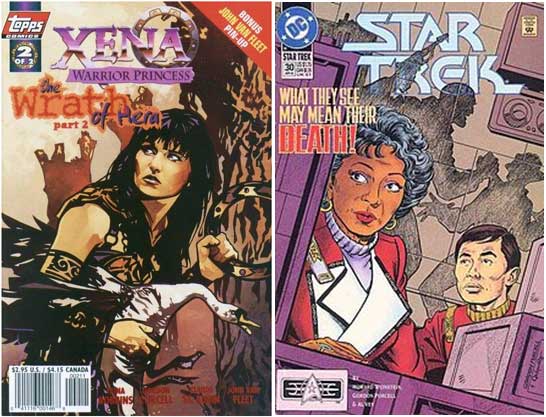
Gordon Purcell
Artist Guest
Comic Book artist whose works include Star Trek, X-Files, Robin, Silver Sable, Soulsearchers and Company, Flash, The Avengers, JLA, Superman, Wonderman, Bard Wire, Godzilla, Race Warriors, Elvira, and Kolchak the Night Stalker
Born in Lansing, Michigan, Purcell grew up reading Marvel Comics and DC Comics, and his love of drawing was sparked by watching cartoons of Spider-Man and Batman. The first comic book he read was a Disney comic book. He graduated from the University of Minnesota with Bachelor's degrees in Studio arts and theater and has remarked that with the emphasis on costume design and directing in comics, the theater probably helped him more. He currently resides in Plymouth, Minnesota, and is married with one son.
Purcell has worked on numerous comic books, including Star Trek, Star Trek: The Next Generation, Star Trek: Deep Space Nine, Star Trek: Voyager, Soulsearchers and Company, Flare, Flash, The Fantastic Four, Superman, Wonder Man, Hulk vs. Nova, Moon Knight, What If…?, Race Warriors, Kolchak: the Night Stalker, Justice League, Ben 10, and Elvira. His most recent work is Star Trek: Year Four for IDW, written by Trek story editor D. C. Fontana and Star Trek: The Last Generation, written by Andrew Steven Harris. He has also worked on The Phantom for Moonstone and Beyond the Wall (Roman soldiers vs. monsters and barbarians) for IDW.
Purcell claims not to have a favorite company to work for, but is attracted to projects based on the editor and other creators involved with them. He cites his work on Silver Sable as a project he particularly enjoyed, saying he feels that the book was "really going somewhere" by the end of his run. Purcell also cites his work on Gammarauders, stating that having to ink his own pencils taught him a lot about what information he needed to give to his future inkers. Purcell also cites his Star Trek work because he was allowed to visit the sets of those shows, which were among his favorites. Among his favorite characters today include Thing, Robin, Teen Titans, the Metal Men, JLA, The Avengers and Metamorpho.

Joel "MOjo" Moen
Artist Guest
Local artist whose works include Batman, Major Bummer, X-men Unlimited, and Night of the Living Dead: Barbara's Zombie Chronicles.
Joel "MOjo" Moen started out his career as an inking assistant to Tom Nguyen on such books as: Major Bummer, Superman- Man of Steel, JLA, Batman, and X-men Unlimited.
Soon after he was contracted to ink the book "Hellion" from upstart company Dead Dog Comics. MOjo stayed on at Dead Dog Comics for 8 years as Editor-in-Chief while also inking, writing, or scripting the books: Bad Company Incorporated, Mydevil, From Heaven to Hell, Night of the Living Dead: Barbara's Zombie Chronicles, Curse of the Blood Clan, and Cryptic Magazine.
MOjo's latest project is a 35W bridge crash story for Negative Burn with Pete Krause and Jeff Limke called: 13 seconds.

Kevin Voith
Artist Guest
Fantasy Illustrator

Dakota Paranormal Investigators
Guest of Honor
A local North Dakota group who investigates the paranormal.
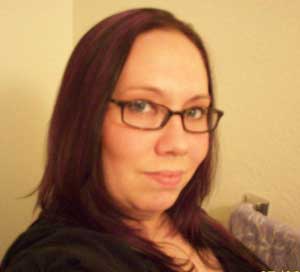
Jamie Standifird
Guest of Honor
A psychic Medium who lends her services to Nodak Paranormal and discusses the unknown at www.para-x.com.
Is a a psychic medium who spends her "ME" time researching all things paranormal. She lends her services to Nodak Paranormal and loves investigations. Jamie hosts a radio show where she discusses the unknown and paranormal at www.para-x.com.
Jamie spends hours a week researching and booking guests. She believes knowledge is power and loves to read.
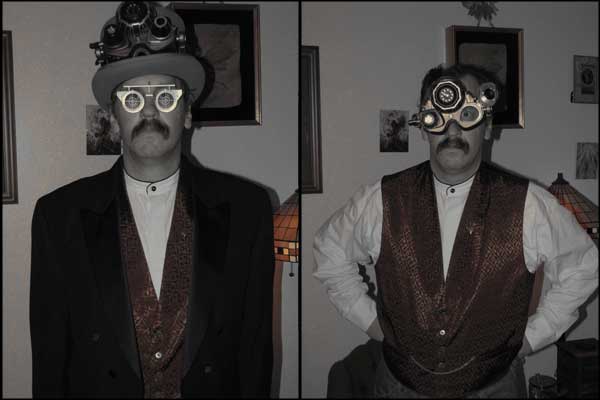
Stephen Miller
Guest of Honor
Stephen Miller is a new presence in the role-playing game industry. He is the co-author of the Gaslight Victorian Fantasy Campaign Setting, the editor of Sherwood: The Legend of Robin Hood role-playing game, and co-author of the upcoming Darwin's Guide to the Mystical and Mundane, all published by Battlefield Press, Inc.
Stephen's interest in what would later be called Steampunk started at an early age. He was just short of eight months old when his father started watching the debut episode of The Wild Wild West in 1965. Ever since then Stephen has had a fascination with combining history and high technology in a myriad of ways..
In late 1979 a major influence entered Stephen's life and set him on the course he continues to follow to this day. That year he learned about something called a role-playing game, specifically Traveller, the science fiction game. Somehow his parents found a copy and gave it to him for Christmas that year. From that point he was hooked, figuring out ways to play, run, and change the game to suit his fancy. The first non-science fiction game setting he created involved Sherlock Holmes, ray guns, and zeppelins.
Over the years his interest in games and authors like Jules Verne, Sir Arthur Conan Doyle, H.. G. Wells, William Gibson, and Neal Stephenson have influenced Stephen's game choices and his interest in writing and creating games. In the 1990s GURPS was the game of choice, which lead to his playtesting credits in GURPS Steampunk and submissions for the GURPS Bestiary. These acceptances gave him confidence to become more involved in a hobby that had become a big part of his life.
Knowledge of history and English culture brought him from being an overly detail-focused playtester to being the editor for Sherwood: The Legend of Robin Hood from Battlefield Press, Inc. (BPI). A few years later he was asked to contribute to the Gaslight Victorian Fantasy Campaign Setting, also from BPI. This allowed Stephen to combine his love of Steampunk with his love of gaming and share it with others.
Currently, Stephen is working on a companion book for Gaslight titled Darwin's Guide to the Mystical and Mundane. He is also developing two board games and a card game, which he will gladly tell you about, given the chance.
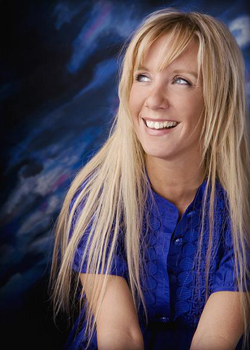
Tiffany Johnson
Guest of Honor
Acclaimed psychic, Tiffany gives inspiration, insight and understanding into your ever-changing life.
Personal life
Combs was born in Oxnard, California, and raised in Lompoc. He attended Santa Maria's Pacific Conservatory of the Performing Arts, and later developed his acting skills in the Professional Actor's Training Program at the University of Washington.
Career
Combs's best known horror role was as Herbert West, the main character in the movie Re-Animator, which he has reprised in the film's two sequels.
On television, Combs enjoyed critical and popular success playing alien characters on the various modern Star Trek incarnations, beginning in 1994 with Star Trek: Deep Space Nine, in 2000 with Star Trek: Voyager, and in 2001 with Star Trek: Enterprise. Combs has played nine different onscreen roles in the Star Trek universe. His largest science-fiction role to date has been his regular guest role on Star Trek: Deep Space Nine as the Vorta clone Weyoun. Combs has said that Weyoun was his favorite Star Trek role, and he had a great deal of input in developing the character.
On the same series, Combs had a recurring role as the Ferengi character Brunt. During the DS9 episode "The Dogs of War", Combs appeared as both Weyoun and Brunt, making Trek history as the first actor to play two unrelated recurring roles on screen in the same episode.

Todd Eliassen
Guest of Honor
Screenwriter whose works include The Black Donnellys, Hidden Hills, Teen Angel and Windfall.
Graduate from MSUM, Todd has work on various film projects, including The Black Donnellys, Hidden Hills, Teen Angel and Windfall.







